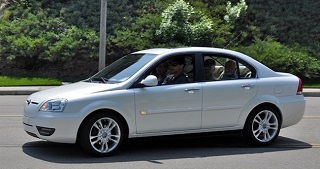From Guest Blogger Giles Kirkland: Overcoming the Challenges of Solar-Powered Vehicles

This fact partnered with the occasionally inconvenient process of charging your car has made potential ways to improve current technologies popular among green car manufacturers and users alike. Most popular among the innovative automotive technologies that we are seeing is the possibility to power cars directly from their own solar power platforms.
In theory this seems like a great way to cut the possibility of ‘dirty energy’ making their way into electric vehicles and eradicate any waiting times for charging, however there are some obstacles to overcome first.
Inefficiency
Probably the most impactful obstacle that must be overcome before solar vehicles become a real option is simply the fact that the technology is not yet efficient enough to make the car move. These cars that can move from solar power are built very light and low to the ground which makes them unsafe for commercial use.
Many businesses and government organisations are working to increase the efficiency of solar panels across the board. In fact, recent technologies appear to be breaking records for energy collection on a consistent basis. Some of these most promising technologies are multi-junction cells that contain layers of light-harvesters that gather energy. These innovations are likely to soon be applicable for domestic and commercial use.
Energy Storage
One way that green car manufactures may be able to bypass the issue of inefficient solar panels is by introducing batteries that could store the power. The point here is to allow for the solar panel to work even whilst the car is not being driven, store that energy and then use it once it is required. Again, this is a great idea but in practice it involves a problem – namely the size of the battery that would be needed to run a car. It would make it so heavy that the power stored could be unable to move the vehicle.
However, some companies are making big strides towards creating batteries that will be small and light enough to practically keep energy harnessed within a car easily. For example, Tesla has released an innovative solar powered battery that can be used to run an everyday home. As this technology continues to develop, it is likely that it will be applicable to the car industry also.
Practicality
For readers that live in dark and wet countries whose first thought when we mention solar powered cars is “great, but we never get any sun”. This is a very real issue and one that the industry recognises that they need to tackle. Even with lightweight storage and efficient panels in place, without sunlight solar panels won’t do anything very useful.
One recent innovation in the solar panel space may be about to change all this. In China, scientists have developed an ingenious solution that allows solar panels to harness the motion of raindrops for energy. This means that solar panelled cars will be able to generate electricity rain or shine.
These major obstacles that are currently stopping us from benefiting from solar powered cars may sound concerning. Yet, with many businesses and government organisations getting interested in this problem and recognising its importance, great progress in remedying the hardships is being done. We are living in a time where leaps in solar panel and energy storage technology is on their way to making solar powered vehicles a reality.

Kirk,
I am a director of company with a nearly 80 year history of building, marketing and maintaining specialist electric vehicles, so I hope you won’t mind me adding to your little dissertation.
Your dissertation does sound very dated, a lot like all those preachy little articles appearing around 2006 to 20011. This impression is reinforced by your choice of illustration which looks suspiciously similar to the infamous “Coda” EV, a proven failure and scam of that era !
There is no “magic” formula, and never was. (Chinese raindrop technology is just silly)
To be competitive, EV’s need to generate enough power to replicate the performance, comfort, convenience and functionality of conventional vehicles. To accomplish this objective EV’s have only two methods.
1) Obtain energy from an outside/off-board source. Trams, trains, Trolleybuses bumper cars etc
2) Obtain energy from On-board storage. (ESD). This means batteries or other ESD technology to replace the enormous enormous of energy required to accelerate and decelerate an object weighing between 3-5 tones, over various gradients,inconsistent loading and terrain conditions over relatively long distances and high speed.
Such dynamics are totally impossible for the physics of on-board solar generation.
The validity of EV transport does not lie in worrying about how electricity is generated, but validated by the zero emissions created by the power plant contained within the vehicle. If you can confine your electric vehicles usage to the energy generated by a renewable power source, that’s great but it doesn’t need to be that pedantic to be environmentally beneficial.
However, what is for more important is for environmentally conscious people like yourself to bite the bullet and let the world see the sincerity of your convictions by purchasing an EV today.
What holds back EV adoption is not oil companies or sinister conspiracies, but “green advocates” waiting for ‘unicorn’ technology !
Believe me, nothing creates as much goodwill, and aids adoption of environmentally friendly technology as the tangible proof of environmentalists leading by example !